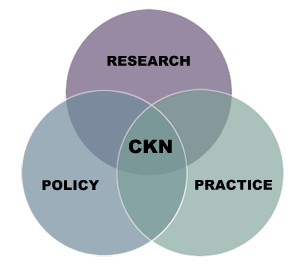The CKN Difference

- Builds on an R&D agenda focused on user needs
- Engages the community of users
- Assembles balanced technical expertise
- Acts as an integrative agent
- Builds scholarly consensus
- Informs policy
The speed at which teacher evaluation is changing has outpaced the rate at which researchers are synthesizing emerging knowledge. The Carnegie Foundation for the Advancement of Teaching has launched the Carnegie Knowledge Network to identify what is and is not known about the critical technical issues around measuring teaching effectiveness. These briefs are part of an ongoing series on value-added methods and applications intended to provide designers of evaluation systems the latest, most reliable research on value-added methodologies. Below are the distinctive aims that define a Knowledge Network:
- Builds on an R&D agenda focused on user needs
Carnegie gathered pressing questions on teacher evaluation from a wide range of stakeholders to ensure that our work was grounded in critical problems of practice. We regularly convened practitioners, researchers and policymakers on issues they considered most important. The use of student test-score gains — value-added methodology — for teacher evaluation continues to be a high priority, both because of its significant consequences and the number of unanswered questions about its prudent use. - Engages the community of users
We regularly engaged K-12 leaders directly involved in developing and implementing teacher evaluation systems. This User Panel helps ensure that our work is relevant and accessible. - Assembles balanced technical expertise
The Carnegie Panel on Assessing Teaching to Improve Learning is made up of technical experts we have enlisted to write on issues of practical importance to K-12 practitioners and policymakers. The Carnegie Panel will develop a consensus on what is and is not known about value-added measures for teacher evaluation. We have purposely chosen for this panel individuals who have expertise in statistics and economics, who are impartial about particular value-added modeling strategies, and whose previous research, taken together, represents a range of views. - Acts as an integrative agent
The Carnegie Foundation brought together the technical knowledge of the Carnegie Panel and the operational knowledge of the User Panel. The groups agreed on what needs to be known about value-added measures, on how the Knowledge Network should operate, and on how the network will produce practical content to be shared online. - Builds scholarly consensus
Technical panelists provided critical feedback to one another in a non-blind peer review process. This process gives the panel the opportunity to build consensus and collective ownership of the knowledge briefs. The authors will monitor commentary on their briefs and update the briefs periodically to reflect the most current research. - Informs policy
Panelists will host Webinars to present key issues from their briefs and to engage directly with users. In addition, Policy Briefs will be prepared for each topic. The Carnegie Foundation’s newly established Washington, DC, office will share the Carnegie Knowledge Network’s findings with a wide range of policymakers, analysts, and opinion leaders in Washington and nationally.

